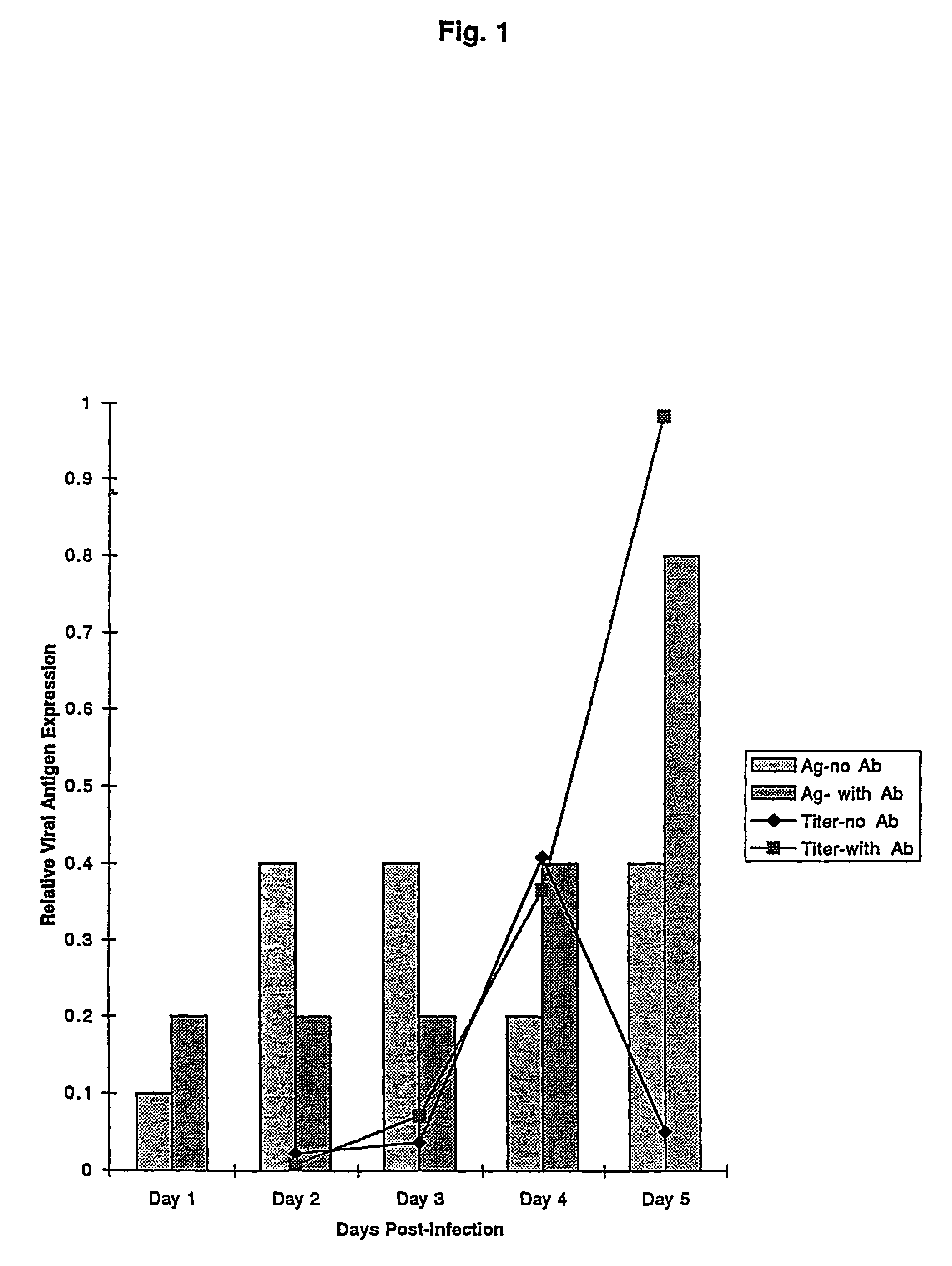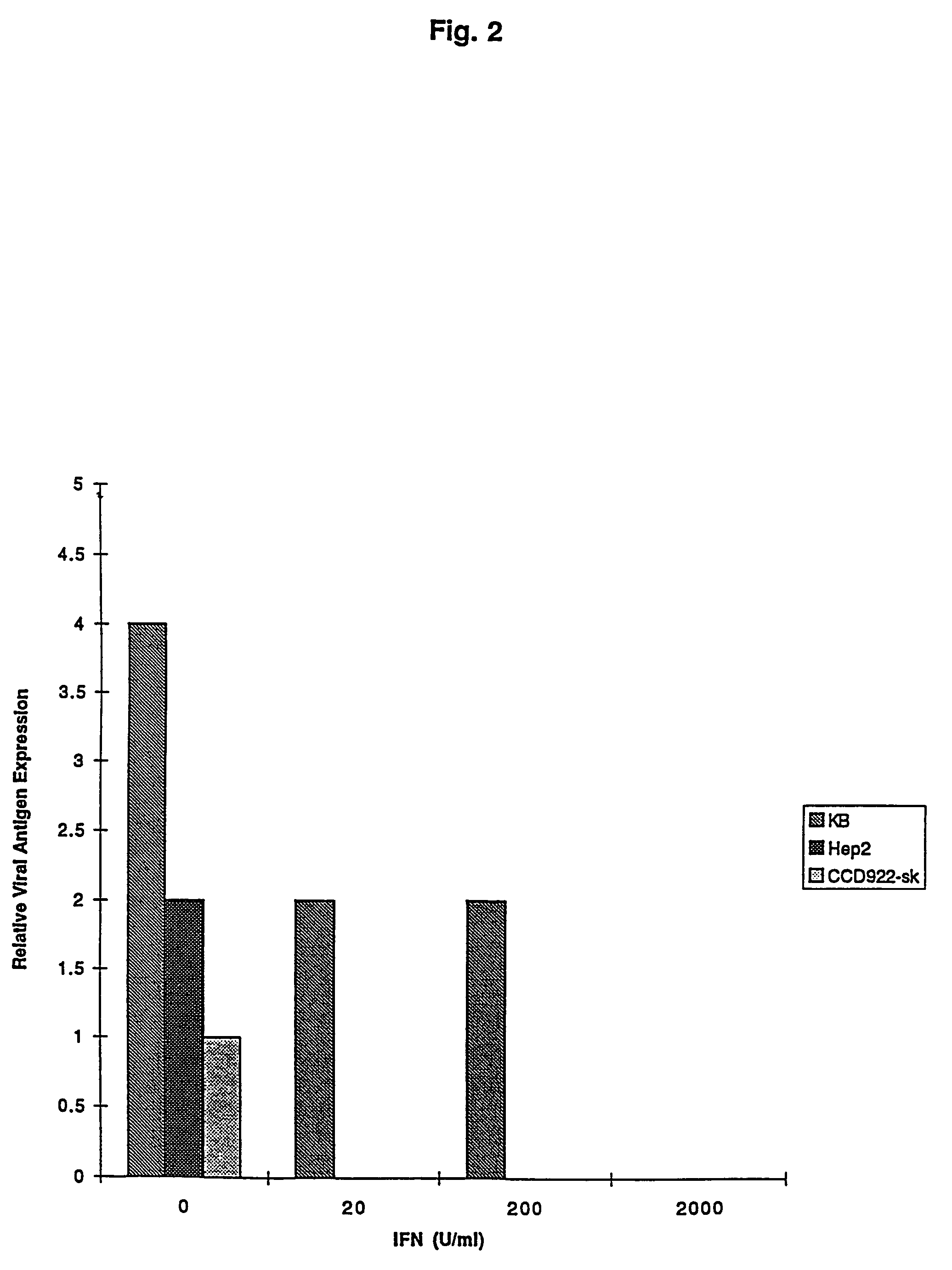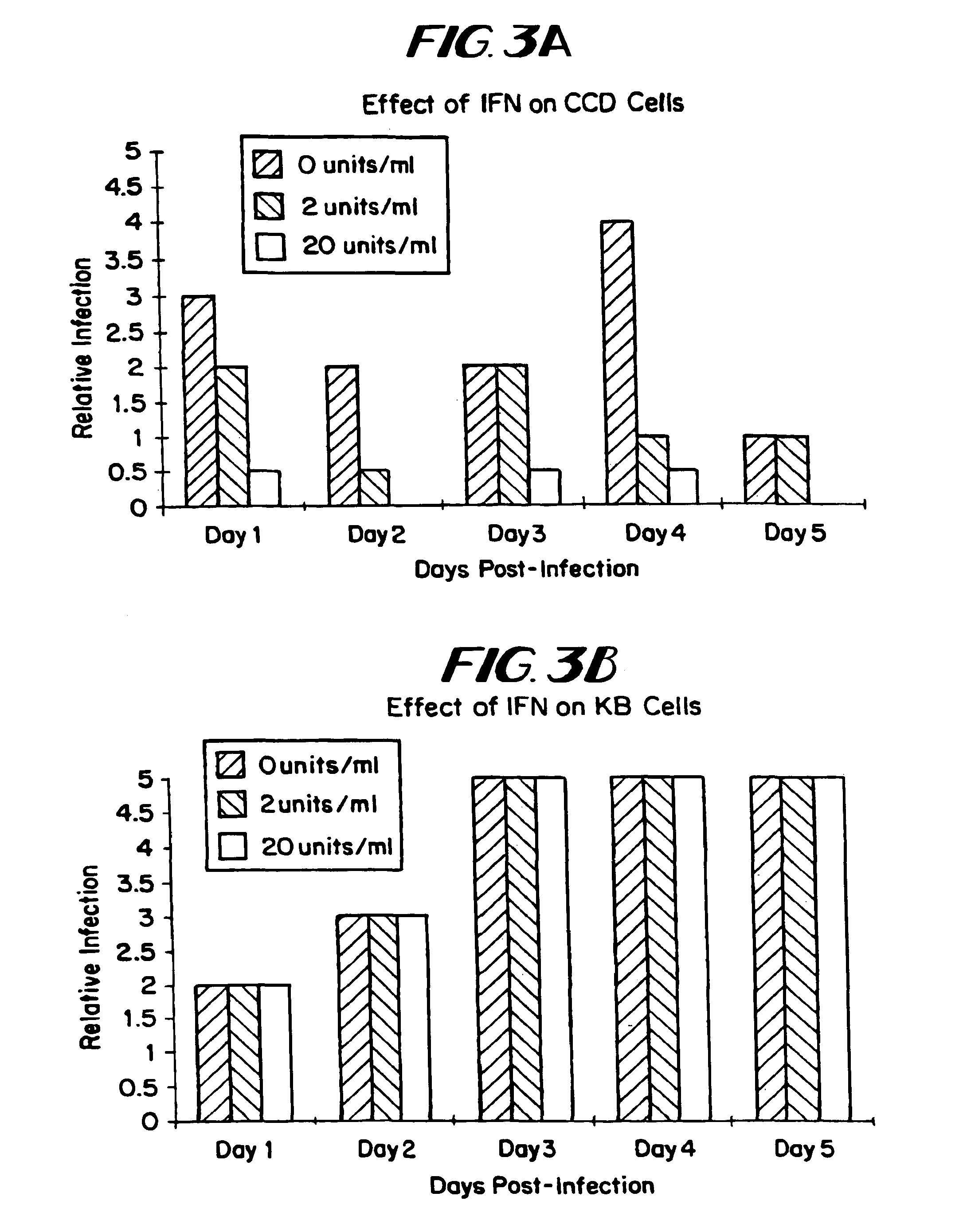Treatment of neoplasms with viruses
a virus and neoplasm technology, applied in the field of viruses, can solve the problems of unsatisfactory treatment, unfavorable early detection of cancer, and less effective cancer treatment, including chemotherapy and radiation, and achieve the effect of enhancing the therapeutic utility
- Summary
- Abstract
- Description
- Claims
- Application Information
AI Technical Summary
Benefits of technology
Problems solved by technology
Method used
Image
Examples
example 1
PPMK107, (a Triple Plaque Purified Isolate of the NDV Strain MK107) Demonstrates a Selective Cytotoxic Activity Toward many Human Cancer Cells Compared to Normal Human Cell
[0201]Human tumor cells and normal cells were grown to approximately 80% confluence in 24 well tissue culture dishes. Growth medium was removed and PPMK107 was added in 10 fold dilutions ranging from 106 plaque forming units (PFU) / well to 10−1 PFU / well. Controls wells with no virus added were included on each plate. Virus was adsorbed for 90 minutes on a rocking platform at 37° C. At the end of the incubation period, the viral dilutions were removed and replaced by 1 ml of growth medium. Plates were then incubated for 5 days at 37° C. in 5% CO2, then assessed qualitatively for the amount of cytopathic effect (CPE). Cytotoxicity was quantified by using a calorimetric MTT (2-[4,5-dimethylthiazol-2-yl]-2,5-diphenyl tetrazolium bromide) assay (Cell Titer 96, catalog #G4000, Promega Corporation, Madison Wis. 53711) mon...
example 2
Use of PPMK107 for the Intratumoral Treatment of Human Tumor Xenografts (5 mm) in Athymic Mice
[0206]Athymic mice were injected intradermally with 10 million human tumor cells. After tumors reached a size range from between 5 and 10 mm, a single injection of PPMK107 (at a dose of 3×108 PFU) or saline was given. Almost all tumor types exhibited a rate of complete or partial regression of 50% to 100% (see Table 7) in mice treated with PPMK107. The one exception is the case of the U87MG experiment (experiment I): Although only one of 9 tumors treated with PPMK107 completely regressed, two more virus-treated tumors showed regression of 32% and 20% and two more virus-treated tumors had slower growth than all 8 tumors treated with saline control. Tumor regression was virtually absent in the saline control treated tumors: In all of these experiments (A through I listed in Table 7) only one of 73 control tumors showed regression. These results indicate that diverse tumor types showed respons...
example 3
Use of PPMK107 for the Intravenous Treatment of Human Tumor Xenografts (5.5 mm) in Athymic Mice
[0208]Athymic mice were injected intradermally with 10 million human HT1080 fibrosarcoma cells. After tumors reached a size range from between 5 and 8 mm, a intravenous injection(s) of PPMK107 or saline were made. As shown in Table 8, at the highest virus dose level (1×109 PFU) complete tumor regression was seen in all seven mice. Single injections of 3×108 and 6×107 resulted in regression rates of over 90%. While a single IV injection of 3×108 gave only a 55% rate of tumor regression, three IV injections at this dose level yielded a 100% rate of response. Mice treated with IV saline exhibited no evidence of tumor regression. These results indicate that subcutaneous HT1080 tumors are very responsive to IV treatment with PPMK107.
[0209]
TABLE 7PPMK107 intratumoral treatment of subcutaneoushuman tumor xenografts (5 mm) in athymic miceCompleteComplete +TumorTumor TypeExpt #DoseNRegressionpartia...
PUM
 Login to View More
Login to View More Abstract
Description
Claims
Application Information
 Login to View More
Login to View More - R&D
- Intellectual Property
- Life Sciences
- Materials
- Tech Scout
- Unparalleled Data Quality
- Higher Quality Content
- 60% Fewer Hallucinations
Browse by: Latest US Patents, China's latest patents, Technical Efficacy Thesaurus, Application Domain, Technology Topic, Popular Technical Reports.
© 2025 PatSnap. All rights reserved.Legal|Privacy policy|Modern Slavery Act Transparency Statement|Sitemap|About US| Contact US: help@patsnap.com



